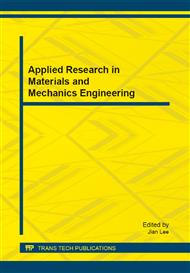p.181
p.187
p.195
p.202
p.208
p.214
p.221
p.225
p.230
Optimization of Injection Moulding Process from the View of Cavity Filling Time and Product Cooling Time
Abstract:
The article deals with the mould cooling system design. The goal of design presented in the article was to propose the mould form so to be achieved the shortest time for both mould filling and product cooling. Studied product is intended to serve as a stopper in the automotive spotlight. After filling of mould cavity, the melt has to cool at 100 ° C, only then it is possible to accede to the next phase, which is final pressure. So the cooling and filling time is directly proportional to the reduction of production cost. 3D model of the mould was created in Autodesk Inventor Proffesional software and then solidification of material was simulated in Autodesk Moldflow Insight software. There were considered four types of cooling system in the article and the best one from the view of time was manufactured and placed into the injection moulding machine Arburg Allrounder 320 C.
Info:
Periodical:
Pages:
208-213
Citation:
Online since:
August 2014
Authors:
Price:
Сopyright:
© 2014 Trans Tech Publications Ltd. All Rights Reserved
Share:
Citation:


